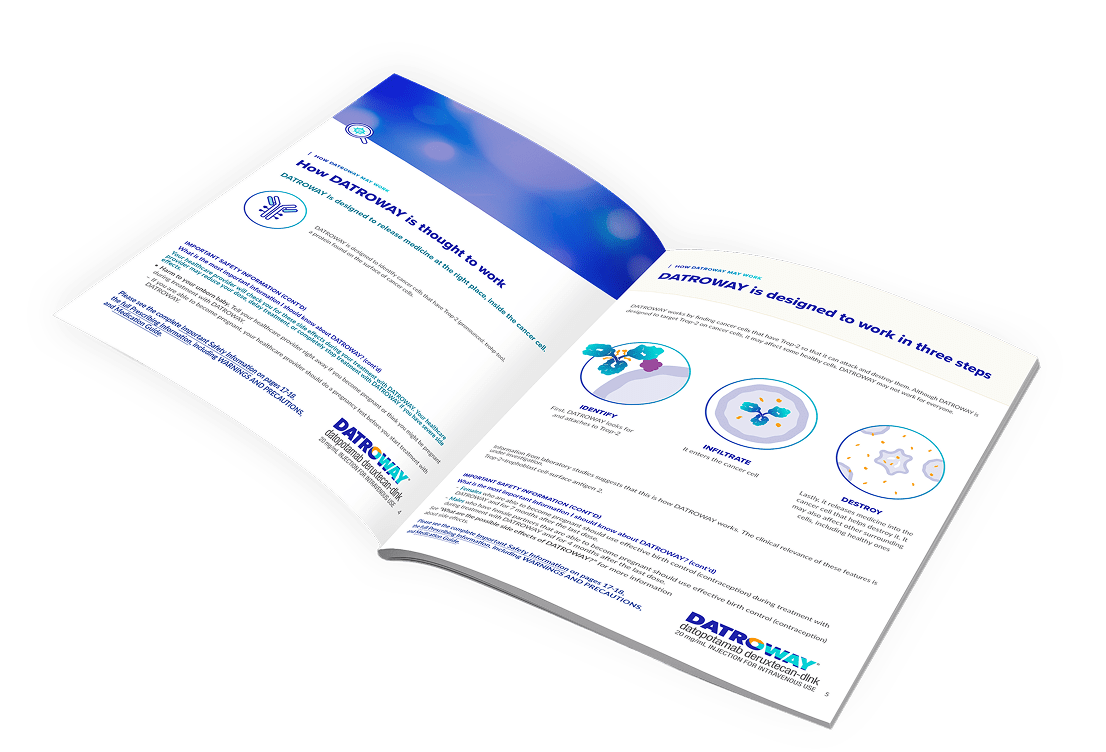About the trials
DATROWAY was studied in two trials in patients with lung cancer. Only some of those patients in each trial had an EGFR mutation. Researchers studied the results in those patients with an EGFR mutation in both trials who took DATROWAY. They were studied as a group because their results represent a portion of all of the patients studied in each trial. The results don't represent all the patients in each trial.
As you look through the results for DATROWAY, here are important points to note:
- The trials were open label, meaning that both the people being treated and trial investigators knew which treatment was received. Therefore, the results could have been influenced by people switching to another treatment, leaving the study, or other factors
- There were 2 clinical trials. One of them was single-arm, which means that everyone enrolled in the trial received DATROWAY. In that trial, DATROWAY was not compared to another medicine. In the other trial, DATROWAY was compared against docetaxel
- The results below combine information from a group of patients in these 2 clinical trials and should be discussed with your doctor
Results with DATROWAY
Please remember that the results you will see are from clinical trials, and each person’s experience may differ. Speak with your doctor about what you may expect on DATROWAY treatment. DATROWAY was FDA-approved for this use based on clinical trials that measured how many patients responded and how long they responded. DATROWAY is still being studied to confirm these results.
Overall response rate (tumor shrinking) results
This is the percentage of people who had a partial or complete response to therapy. A complete response means the tumor could not be seen on imaging tests. A partial response means the tumor shrank by at least 30%.
How many people had their tumors shrink
Median duration of response
Median duration of response is the length of time half of the people who responded to DATROWAY (partial or complete) continued to respond after the first response was seen. This means the length of time people’s tumors continued to respond to treatment without growing or spreading. This was studied in 51 patients with an EGFR mutation who responded to DATROWAY.
How long people continued to respond to treatment

Looking for more information?
Download this brochure to learn more about DATROWAY.

Frequently asked questions
Your doctor may have done biomarker testing to see if your lung cancer cells have the EGFR mutation or other biomarkers that helped your cancer grow. To test for biomarkers, your doctor may do a tissue biopsy, which tests a sample of tumor tissue in a lab, or a liquid biopsy, which tests a sample of your blood.
.png?h=492&iar=0&w=1548&rev=d7437bdca4274df1b56a6868009f1905&hash=DB4999E4D40D4EDDFAAC62ECAA161D2A)








